
Hot Spot is a science fiction board wargame published by Metagaming Concepts in 1979 that simulates the battle for possession of a molten planet.

Hot Spot is a science fiction board wargame published by Metagaming Concepts in 1979 that simulates the battle for possession of a molten planet.
Chiros is a hot planet currently being mined for energy by the Ziegler Corporation using floating platforms called "crustals" that drift about on the molten surface of the planet. A group of rebels called the Technocrats arrives in force to seize the mining operation from Ziegler Corp. [1]
Hot Spot is a 2-player wargame in which one player controls the Ziegler Corporation forces, and the other player controls the Technocrats. [2]
The Ziegler player sets up forces on 14 "crustal" platforms. Most of these drift about, but the largest crustal in the center of the map does not move.
The Technocrats arrive via Attack Platforms; however, these are not designed for the heat of the planet and break apart after four turns, spilling all occupants into the lava. Before that happens, each Attack Platform must take control of a crustal in order to offload the soldiers safely.
The Technocrat player wins by taking control of the large central crustal with an engineering squad. The Ziegler player wins by preventing this.

In 1977, Metagaming Concepts pioneered the microgame, a small and relatively simple solitaire or two-person wargame packaged in a ziplock bag. Over the next five years, the company produced almost two dozen games in their MicroGame series. Hot Spot was the 15th game in the series, designed by W.G. Armintrout and published in 1979. [1]
Armintrout got the idea for the game's setting from two sources: a piece of artwork for the story "Collision Course" on the cover of the July 1972 issue of Analog that showed a mountain rising above a sea of lava; and a children's game he used to play with his sister that featured a rotating plastic mountain. [3]
In Issue 29 of The Space Gamer , American game designer Steve Jackson liked the game, saying "On the whole, it's a good game — easily the best MicroGame to appear recently. If you like SF tactical games, buy it." [2]
In the October 1980 issue of Fantastic , game designer Greg Costikyan wrote that the game "shows that all hope for Metagaming is not lost; they're still capable of producing excellent work ... Well worth getting." [4]
In Issue 27 of Simulacrum, Brian Train noted, "On the face of it, this is an interesting situation, combining constraints of numbers, strength, mobility and time." Train found the game was relatively simple, except for the rules concerning the crustals' movement, collisions and damage taken. However, he found the simple victory condition "tends to stereotype play." [1]
In a retrospective review in Issue 35 of Warning Order, Matt Irsik commented that Hot Spot was "Probably the last of the 'good' MicroGames before a wave of mediocrity hit the series." He called the game "A very interesting concept and game system" and concluded "Not a great game, but definitely good sci fi and fun for a few hours." [5]

G.E.V. is a science fiction board wargame that simulates combat in the near future between armored hovercraft, supertanks and other futuristic weaponry.

WarpWar is a science fiction board wargame published by Metagaming Concepts in 1977 that simulates interstellar combat. It was the fourth in Metagaming's MicroGame series.

Melee is a board wargame designed by Steve Jackson, and released in 1977 by Metagaming Concepts. In 2019, Melee was revived and re-released by Steve Jackson Games.
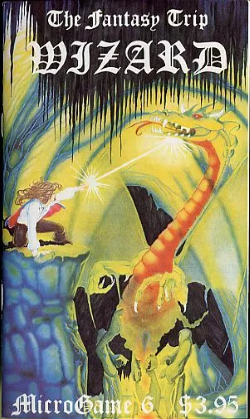
Wizard is a board game system of medieval fantasy magical combat published by Metagaming in 1978 that was designed to complement the previously published Melee, a system of melee combat rules. Forty years later, Wizard was revived and re-released by Steve Jackson Games.

Chitin: I is a science fiction microgame published by Metagaming Concepts in 1977 in which bands of intelligent insects vie for resources.

Annihilator & OneWorld are two board wargames released in one package by Metagaming Concepts in 1979 as the 14th addition to its MicroGame line.
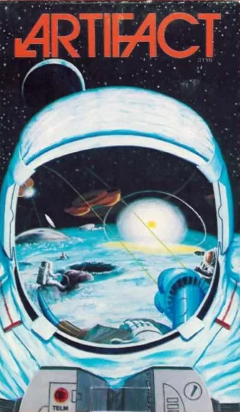
Artifact is a science fiction microgame published by Metagaming Concepts in 1980 as part of its MicroGame line that simulates combat on the moon over a recovered alien artifact.

Cerberus is a science fiction board wargame published by Task Force Games in 1979.

Holy War is a science fiction board wargame published by Metagaming Concepts in 1979 in which two groups battle each other inside a pocket universe.

Ice War is a board wargame published by Metagaming Concepts in 1978 that hypothesizes a Eurasian attack against American oilfields in Alaska.

Olympica, subtitled "The U.N. Raid on Mars, 2206 A.D.", is a science fiction microgame published by Metagaming Concepts in 1978.

Black Hole is a science fiction board wargame published by Metagaming Concepts in 1978 as part of its MicroGame line.

Invasion of the Air-eaters is a science fiction near-future board wargame published by Metagaming Concepts in 1979 in which aliens invaders attempt to replace the oxygen in Earth's atmosphere with sulfur dioxide.
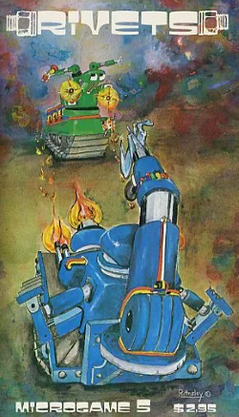
Rivets is a post-apocalyptic board wargame published by Metagaming Concepts in 1977.

Dimension Demons is a science fiction board wargame published by Metagaming Concepts in 1981 as part of its MicroGame line.
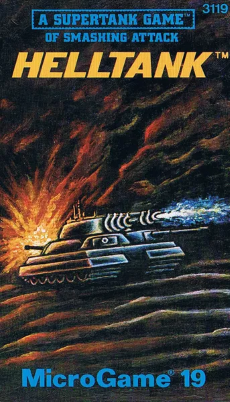
Helltank is a science fiction board wargame published by Metagaming Concepts in 1981 as part of its MicroGame line. The game simulates combat in the future between a supertank and more conventional forces.

Trailblazer is a science fiction microgame game published by Metagaming Concepts in 1981 that simulates interstellar trading. Critics found the game tedious, with an unexpectedly large amount of bookkeeping involved.

Starleader: Assault! is a science fiction microgame published by Metagaming Concepts in 1982 that was designed to introduce the rules of combat with firearms for a forthcoming science fiction role-playing game that did not get published before Metagaming went out of business.
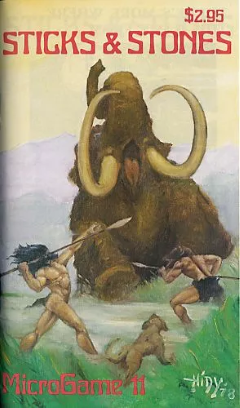
Sticks & Stones is a board wargame published by Metagaming Concepts in 1978 that is set in the Neolithic Age.

WorldKiller: The Game of Planetary Assault is a science fiction board wargame published by Simulations Publications Inc. (SPI) in 1980 that simulates humans in the far future defending a planet against an alien attack.